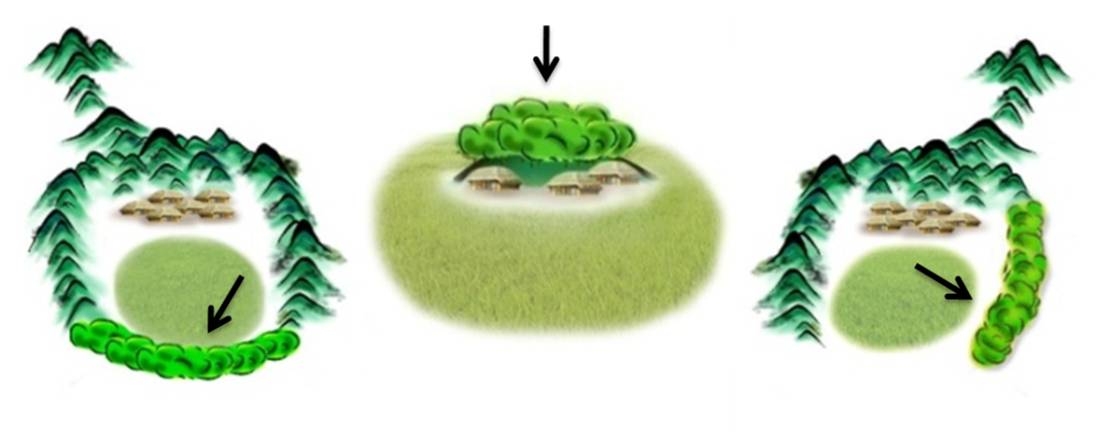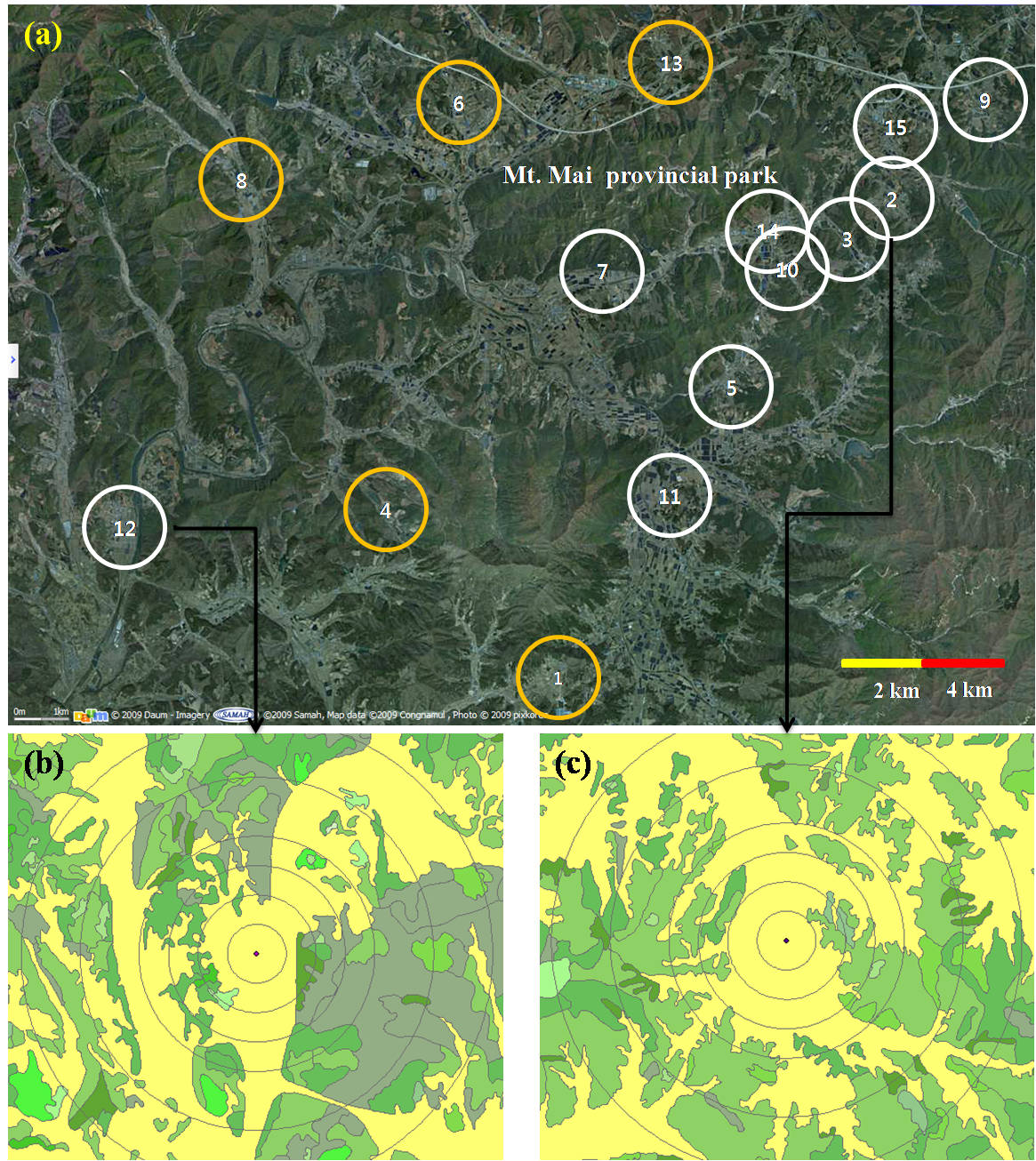Floristic Composition of Bibosoops as Mediated by Seed Dispersal
TERRECO WP 3-06
From 04/2009 to 02/2011Principal Investigator: Chan Ryul Park, Dowon Lee, Björn Reineking
Staff: Insu Koh
Grant: IRTG 1565 WP III TERRECO - Complex Terrain and Ecological Heterogeneity - Evaluating ecosystem services in production versus water yield and water quality in mountainous landscapes
Introduction
Seed dispersal is an ecological key process in maintaining local plant diversity in fragmented agricultural landscapes. In the Korean agricultural landscape, there exist linear or round shaped traditional village groves called ‘bibosoop’ that are isolated or linked to neighbouring forest. They are expected to provide a refuge for seeds dispersed from the plant species in the neighborhood forest; however, their impact on plant species dispersal has not been investigated in real landscapes. In this study, we analyze the effects of landscape connectivity and dispersal potential on plant species richness and on seed deposition patterns by birds in bibosoops on different spatial scales. We also develop seed dispersal model based on seed dispersal kernels to explain the observed spatial patterns and to determine the implications for conservation of bibosoops.

Fig.1. Different bibosoop types according to their location and shape in the agricultural landscape (Lee et al. 2007)
Study sites
The study region is located in the middle of South Korea, Jinan County. We selected fifteen bibosoop habitats.

Fig. 2. (a) The study region is located in the middle of South Korea, Jinan-County, individual study sites (1 – 15). (b), (c) Example of study sites, bibosoops, with different proportion of forest area in the surrounding landscape.
Research questions and methods
1. Does the composition of plant species in the bibosoop habitat respond to landscape connectivity (forest cover) at different spatial scales according to dispersal ability with regard to short- and long-distance dispersal?
- Field survey and analyze forest map
- Multiple linear regression:
Independent variables: bibosoop size, management level, forest cover at different spatial scales
Dependent variables: Plant species richness of short-distance and long-distance dispersal species
2. How does landscape connectivity at different spatial scales affect the composition and behavior of bird communities and consequently influence seed deposition patterns in bibosoops?
- Install seed traps in the bibosoop habitats and collect seed deposition data
- Multiple linear regression / Generalized linear model
Independent variables: bibosoop size, management level, forest cover at different spatial scales
Dependent variables: Seed richness and abundance
3. Do the seed dispersal models suggested by this study support these ecological processes?
Develop seed dispersal model: we randomly distributed the seed source species over forest areas and calculated the number of seeds deposition in bibosoop using different dispersal kernels.
In the construction of the dispersal kernel, we consider four different variables: distance, edgeness, visibility, distinction.
This research is supported by Basic Science Research Program through the National Research Foundation of Korea (NRF) funded by the Ministry of Education, Science and Technology (MEST) (No. 2009-0076026, 2010-0009912)
